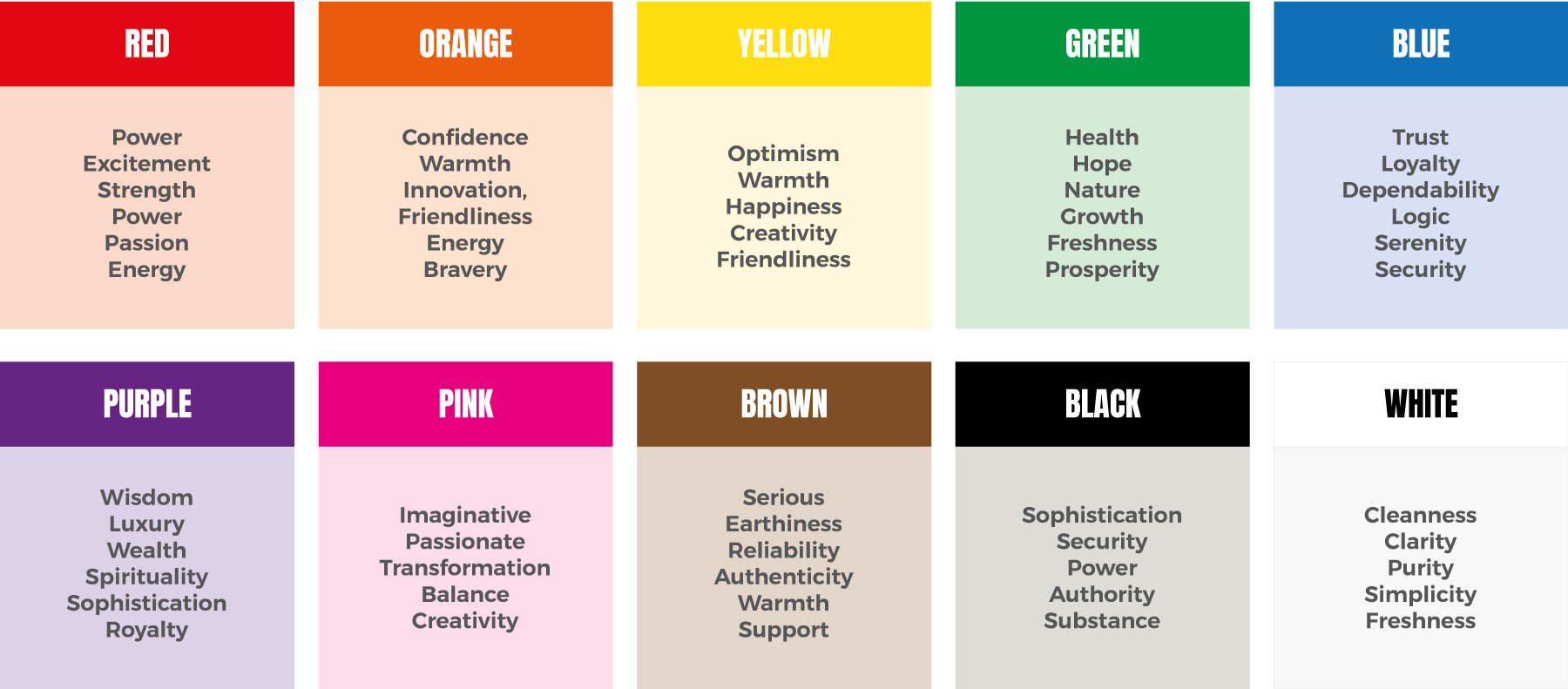Colour psychology is an interesting subject, and one that influences us as designers every day. As a designer, there are times where one colour may be more appropriate to choose than another, and a lot of the time this comes down to the emotions evoked by certain colours.
What is colour psychology?
We can simply describe colour psychology as the affect of different colours on human behaviour. This can apply to all facets of our behaviour, but is most commonly applied to how we interact with brand and marketing. Colour psychology differs from person to person, however there are definitely common themes that appear.
How can this be applied to design?
In branding especially, we can choose a colour palette that will reflect the emotions we want the customer to feel when they engage with us. For example, you can probably guess why BP use green predominantly in their branding (despite that probably being the opposite of what they do), and why Cadbury would choose purple. Don’t worry if you’re not entirely sure, as I’ll be running through the emotions that each colour conveys.
Conscious and unconscious decisions
As a consumer, when we choose a product, service or brand comes down to making a set of decisions. Some are decisions are very conscious and comparable, such as the price of a product or the technical specification against competing products. Then, there are the unconscious decisions. We would class these decisions as the ones that your brain makes before you even realise. Colour plays a big part in the unconscious decisions we make, not just in choosing a product or service, but even in every day life. For example, if you see a road sign that’s in red, it’s most likely quite a serious one that’s telling you that you must do something, such as STOP or 30MPH. That choice in colour is not by coincidence, psychologically we see red as conveying urgency. So, with that in mind, think about why so many ‘50% off SALE’, or ‘SALE MUST END SUNDAY!’ signs are in red. While it may not be a life or death situation like when we’re driving, we tie the idea of seeing a red sign to it being something we should read with urgency, caution or attention. It’s a clever piece of marketing at capitalises on colour psychology. Two very different pieces of signage, but both use the colour red to evoke a certain emotion in the reader.
What colour evoke certain emotions in us?
Each colour in the spectrum can make us feel a certain way just by association, these are the most common themes we can see in colour psychology. There are both positive and negative emotions that we can attribute to each colour to.
Red
Positive: Power, Excitement, Strength, Power, Passion, Energy, Youth, Confidence
Negative: Anger, Danger, Warning
Orange
Positive: Confidence, Warmth, Innovation, Friendliness, Energy, Bravery
Negative: Frustration, Ignorance, Immaturity
Yellow
Positive: Optimism, Warmth, Happiness, Creativity, Friendliness
Negative: Caution, Anxiety, Fear
Green
Positive: Health, Hope, Nature, Growth, Freshness, Prosperity
Negative: Envy, Sickness, Boredom
Blue
Positive: Trust, Loyalty, Dependability, Logic, Serenity, Security
Negative: Coldness, Emotionless, Uncaring
Purple
Positive: Wisdom, Luxury, Wealth, Spirituality, Sophistication, Royalty
Negative: Introversion, Decadence, Moodiness
Pink
Positive: Imaginative, Passionate, Transformation, Balance, Creativity
Negative: Outrageousness, Femininity, Impulsive
Brown
Positive: Serious, Earthiness, Reliability, Authenticity, Warmth, Support
Negative: Humourless, Dirty, Sad
Black
Positive: Sophistication, Security, Power, Authority, Substance
Negative: Oppression, Coldness, Menance
White
Positive: Cleanness, Clarity, Purity, Simplicity, Freshness
Negative: Sterility, Coldness, Isolation
So, as we can see there are a plethora of emotions that come with each colour, how we utilise this can be important in helping a brand or campaign engage with the right audience and help evoke certain emotions. Of course, colour is just one aspect of branding and marketing and colour psychology should not always be taken as the defining direction, however it’s important to understand how different colours can be perceived by the unconscious part of customers everyday decision making.


